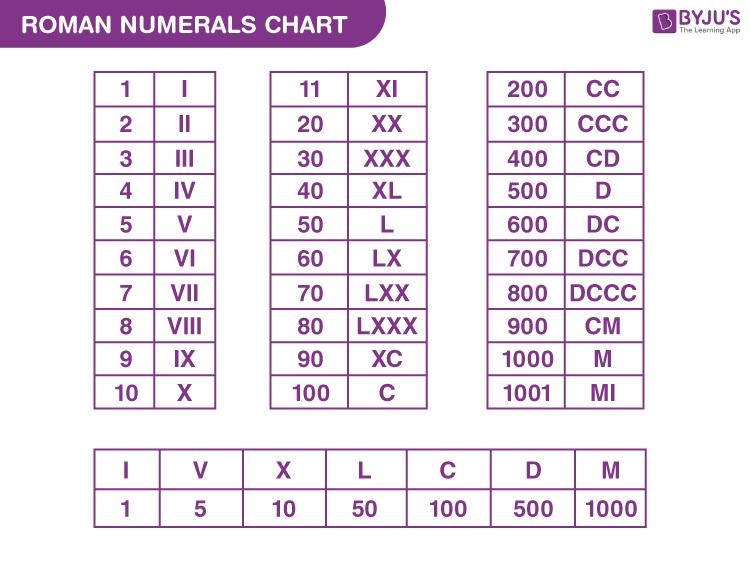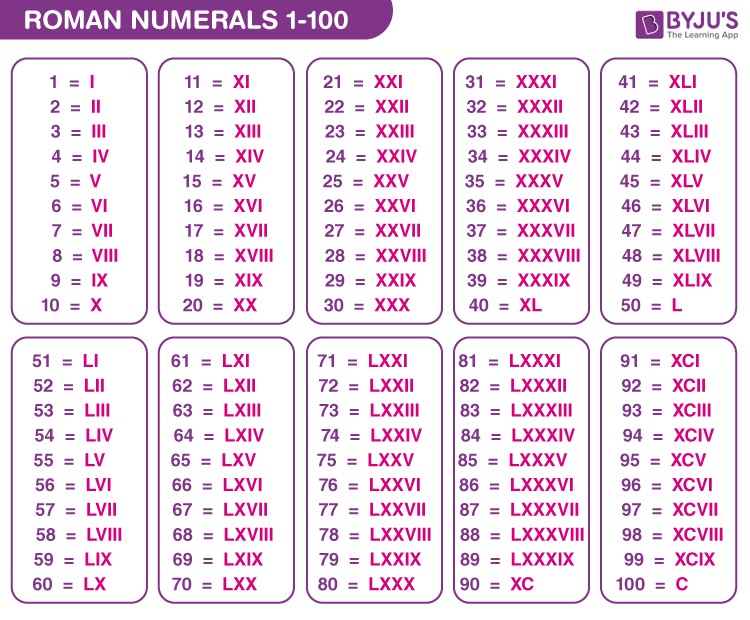Roman numerals, a system originating in ancient Rome, continue to find use today in various applications, from clock faces to book chapter numbering. This article provides a comprehensive look into the Roman numeral system, with a specific focus on understanding how the number 8 is represented.
Decoding the Roman Numeral System
The Roman numeral system employs letters to represent numbers. Here’s a table of the fundamental symbols and their corresponding values:
| Roman Numeral | Value |
|---|---|
| I | 1 |
| V | 5 |
| X | 10 |
| L | 50 |
| C | 100 |
| D | 500 |
| M | 1000 |


What is 8 in Roman Numerals?
The number 8 is represented as VIII in Roman numerals. This is derived by combining the symbol for 5 (V) with three symbols for 1 (I). In the Roman numeral system, when a symbol of smaller value follows a symbol of greater value, their values are added. Thus, VIII = 5 + 1 + 1 + 1 = 8.
Rules for Writing Roman Numerals
Understanding these key rules is crucial for accurately converting numbers to Roman numerals and vice versa:
- Addition: When a symbol of smaller value appears after a symbol of greater value, you add the values. (e.g., VI = 5 + 1 = 6).
- Subtraction: When a symbol of smaller value appears before a symbol of greater value, you subtract the smaller value from the larger. (e.g., IV = 5 – 1 = 4).
- Repetition: A symbol can be repeated up to three times to multiply its value. (e.g., III = 3, XX = 20, CCC = 300).
- Symbols Not Repeated: The symbols V, L, and D (representing 5, 50, and 500 respectively) are never repeated.
- Subtraction Limitations: I can only be subtracted from V and X. X can only be subtracted from L, C, and M. C can only be subtracted from D and M.
Roman Numerals Chart (1 to 20)
Here’s a quick reference chart for Roman numerals 1 to 20:
| Number | Roman Numeral |
|---|---|
| 1 | I |
| 2 | II |
| 3 | III |
| 4 | IV |
| 5 | V |
| 6 | VI |
| 7 | VII |
| 8 | VIII |
| 9 | IX |
| 10 | X |
| 11 | XI |
| 12 | XII |
| 13 | XIII |
| 14 | XIV |
| 15 | XV |
| 16 | XVI |
| 17 | XVII |
| 18 | XVIII |
| 19 | XIX |
| 20 | XX |
Converting Numbers to Roman Numerals: Examples
Let’s look at some examples of converting larger numbers:
Example 1: Convert 49 to Roman Numerals
- 40 = XL
- 9 = IX
- Therefore, 49 = XLIX
Example 2: Convert 2024 to Roman Numerals
- 2000 = MM
- 20 = XX
- 4 = IV
- Therefore, 2024 = MMXXIV
Example 3: Convert 1776 to Roman Numerals
Understanding the conversion of 1 to 100 in Roman numerals.
- 1000 = M
- 700 = DCC
- 70 = LXX
- 6 = VI
- Therefore, 1776 = MDCCLXXVI
Applications of Roman Numerals
While not as prevalent as Arabic numerals in everyday calculations, Roman numerals still find use in specific contexts:
- Clock Faces: Many traditional clocks and watches use Roman numerals to display the hours.
- Book Chapters and Prefaces: Roman numerals are often used to number book chapters, prefaces, and appendices.
- Outlines and Lists: They are sometimes used in outlines and lists to denote levels of hierarchy.
- Building Cornerstones and Monuments: Roman numerals may be inscribed on buildings and monuments to indicate the year of construction.
- Royal and Papal Numerals: They are used to distinguish between rulers or Popes with the same name (e.g., Queen Elizabeth II, Pope John Paul II).
- Copyright Dates: They can be used to indicate the copyright date of films, television programs, and other media.
Practice Questions
- What is 66 in Roman numerals?
- Convert 1492 into Roman numerals.
- What number does the Roman numeral MCMXCIX represent?
- What is 28 in Roman Numerals?
- Write 54 in Roman Numerals.
- Write 2023 in Roman Numerals
Conclusion
Understanding the Roman numeral system provides insight into a historical method of numerical representation. Knowing how to convert numbers like 8 (VIII) and applying the rules of addition and subtraction enables you to decipher and use these numerals in various contexts. Whether you’re reading a clock, studying history, or just curious, the Roman numeral system offers a fascinating glimpse into the past.